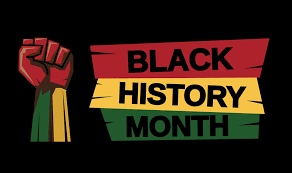During the month of February, Germantown Academy offered a unique display of activities and gatherings to celebrate Black History Month. Events such as John Jennings’s assembly, Mr. Tinsley’s reading of A Boy Like You and Sra. Ayers’s after-school activities all contributed to a joyful celebration of Black History Month.
Sra. Ayers was an integral member in planning the Black History Month events. She hosted the after school activities in which various students watched the movie Selma, a TED Talk on the difference between being color blind and color brave, a presentation about the “Divine Nine,” and the postponed Name That Tune activity.
Earlier in the month, students gathered together to watch Selma, a movie about black suffrage in the 1900’s. Sra. Ayers drew connections between Selma and the oppression of the black community in the 20th and 21st centuries and enlightened students on the importance of watching how different forms of the same oppression still exist today.
The next activity GA enjoyed was a TED Talk on the differences between being color blind versus being color brave. The speaker highlighted the harm in being color blind: losing sight of one’s experience and story in regards to the color of their skin. Being color brave allows you to embrace yourself and the people around you by understanding how skin color affects your experience in this world.
The Divine Nine presentation by Sra. Ayers and Mr. Walker-Johnson explained how historically black sororities and fraternities focused on giving back to the community and providing opportunities to black youth.
Lastly, the Name That Tune activity brought together the whole school community to play a fun game and concluded the Black History Month celebrations.
When asked what Sra. Ayers’s ideal celebration for Black History Month would be, she replied that she hoped everyone in the whole school was interested in celebrating and that it was not just a month-long celebration. She wished we celebrated year long, stating, “our history is everybody’s history.” Sra. Ayers noted that, in the future, she hopes the celebration will not just be the responsibility of BSA, Ms. Walker Johnson, or herself, but rather led and valued by all students. She wisely concludes that this month is a teaching moment for a predominately white school: “When you learn about other people you learn about yourself.”
Mr. Tinsley also significantly contributed to making this month all the more special. He was kindly asked by Ms. Walker-Johnson to read a bedtime story called A Boy Like You to the Lower School students. He was honored to read a book that focused on diversity and youthful individuality to the younger community and was eager to show inclusion and representation to younger kids by sharing literature and knowledge with them as a black man. He mentions that this specific activity benefited the community as it encouraged diverse literature among young learners.
When asked if this month was his ideal celebration for Black History month, he replied, “It’s never ideally what I think it should be,” noting how there is so much emphasis on cramming black stories into the month of February rather than “centering black voices every day of the year.” The problem with dedicating just one month to learn about black stories, Mr. Tinsley states, is that it forces people to believe you need to be a survivor of some kind of brutality, or someone extraordinary to be recognized as important. He hopes in the future to be able to humanize black people, saying how harmful it is to cut off centering black voices on February 28th, throwing them out as if black lives are disposable. Mr. Tinsley again states it is important and valuable to make black storytime a regular occurance beyond just Black History Month.
The last major event that happened this month was the John Jennings Assembly in which comic book illustrator of Kindred, John Jennings, held a virtual assembly for the GA community.
Daelyn Nwaobasi ‘21, a Writing Center advisor and BSA co-president kindly gave some insight on the behind-the-scenes of this event. He said the main purpose of Jennings’s presentation was to “provide some insight to the world of art through an African American’s point of view,” noting how it allowed us to analyze in a different light these futuristic ideas and the technology around us. Daelyn admired the immense amount of research and study John Jennings put into his work, describing how “with each character he’s created there’s this deep history to them which stems from an actual piece of history.” As a comic book lover himself, Nwaobasi stated that he was fascinated by Jennings’s words and believed “GA definitely did their part to ensure that students could hear his voice and perspective on things.”
When asked what the ideal Black History Month would look like in his eyes, Daelyn’s response resonated with those of Sra. Ayers and Mr. Tinsley: “I think it should definitely be a notion that Black History should be appreciated over the course of the whole year.” The best way to do this is to “explore your interests through the lens of black people.”
Black History Month is an important time of the year for GA as it allows us to hear and understand black perspectives and view art and contributions in a different light. Through all of these events, GA was able to create a diverse and thoughtful celebration.


Nice reporting, Cam!